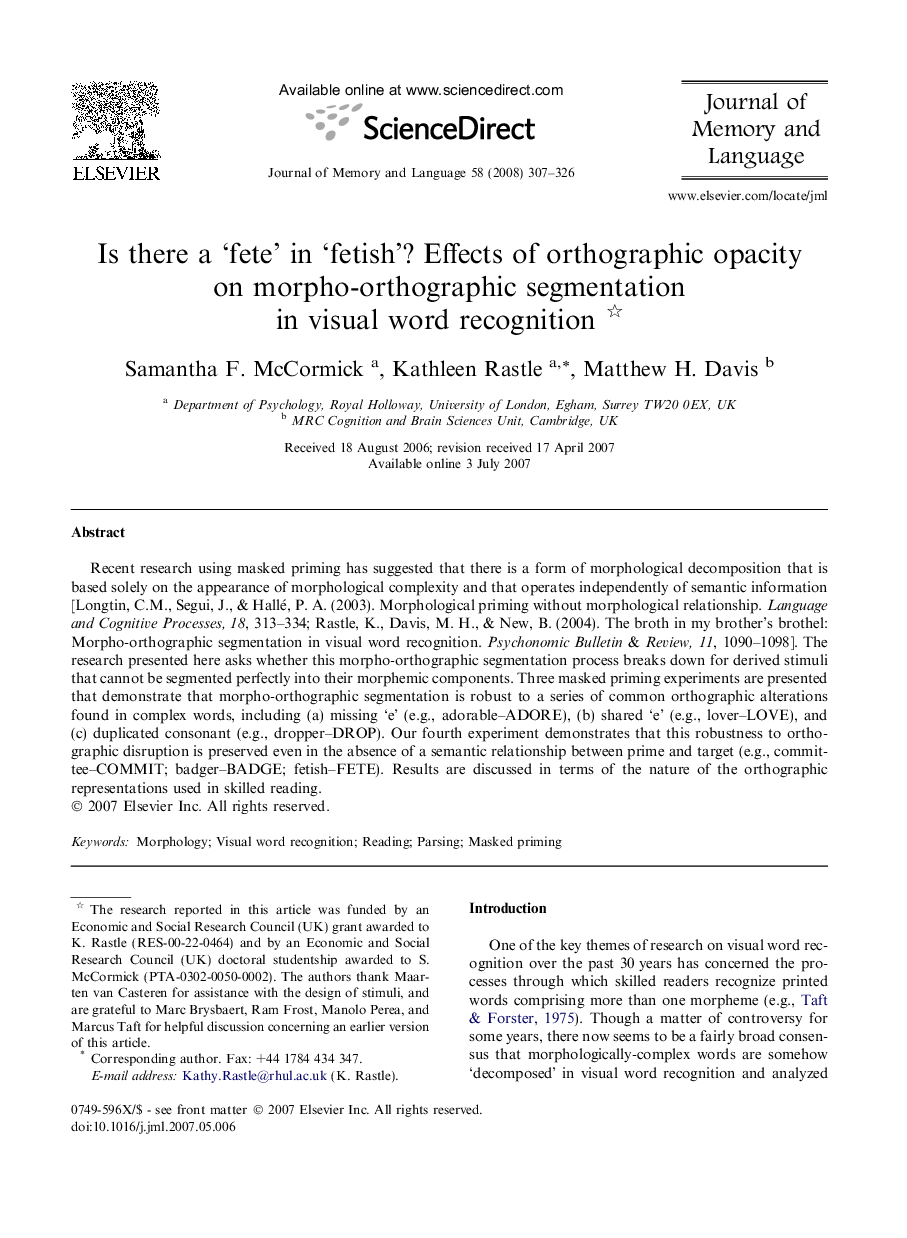| Article ID | Journal | Published Year | Pages | File Type |
|---|---|---|---|---|
| 932274 | Journal of Memory and Language | 2008 | 20 Pages |
Recent research using masked priming has suggested that there is a form of morphological decomposition that is based solely on the appearance of morphological complexity and that operates independently of semantic information [Longtin, C.M., Segui, J., & Hallé, P. A. (2003). Morphological priming without morphological relationship. Language and Cognitive Processes, 18, 313–334; Rastle, K., Davis, M. H., & New, B. (2004). The broth in my brother’s brothel: Morpho-orthographic segmentation in visual word recognition. Psychonomic Bulletin & Review, 11, 1090–1098]. The research presented here asks whether this morpho-orthographic segmentation process breaks down for derived stimuli that cannot be segmented perfectly into their morphemic components. Three masked priming experiments are presented that demonstrate that morpho-orthographic segmentation is robust to a series of common orthographic alterations found in complex words, including (a) missing ‘e’ (e.g., adorable–ADORE), (b) shared ‘e’ (e.g., lover–LOVE), and (c) duplicated consonant (e.g., dropper–DROP). Our fourth experiment demonstrates that this robustness to orthographic disruption is preserved even in the absence of a semantic relationship between prime and target (e.g., committee–COMMIT; badger–BADGE; fetish–FETE). Results are discussed in terms of the nature of the orthographic representations used in skilled reading.
